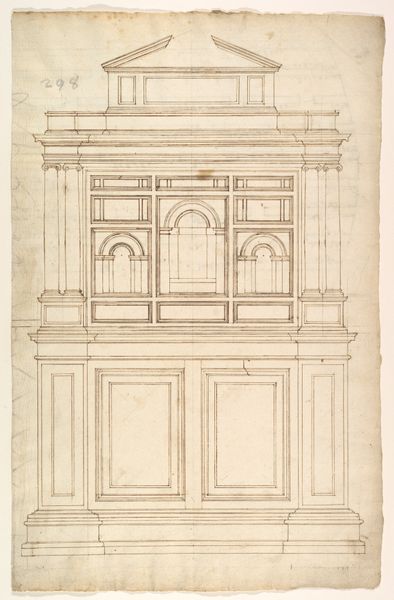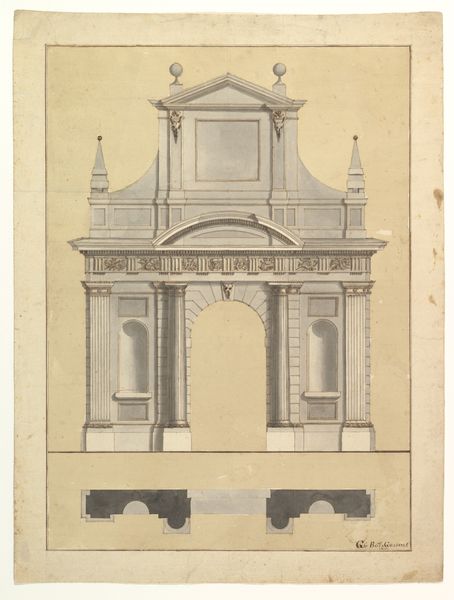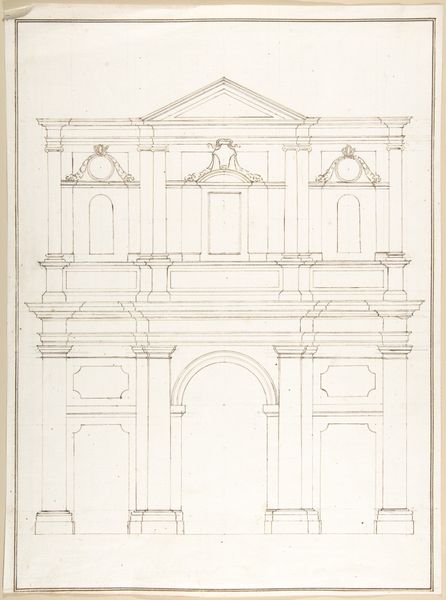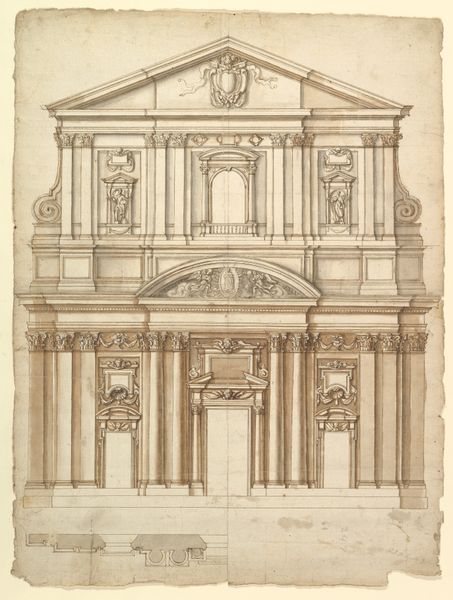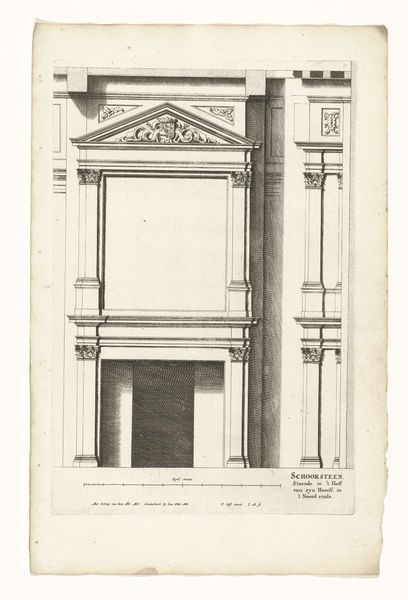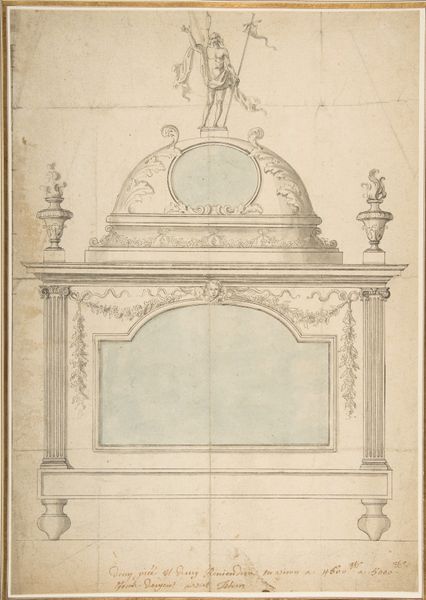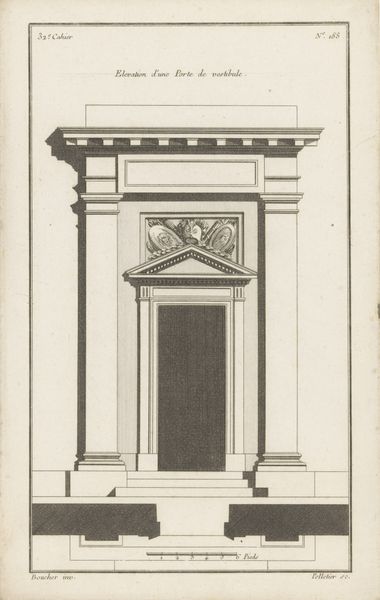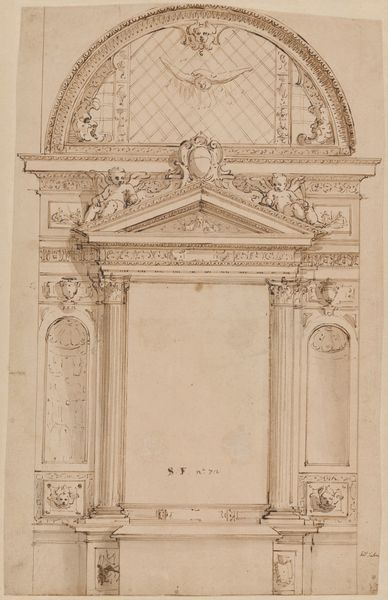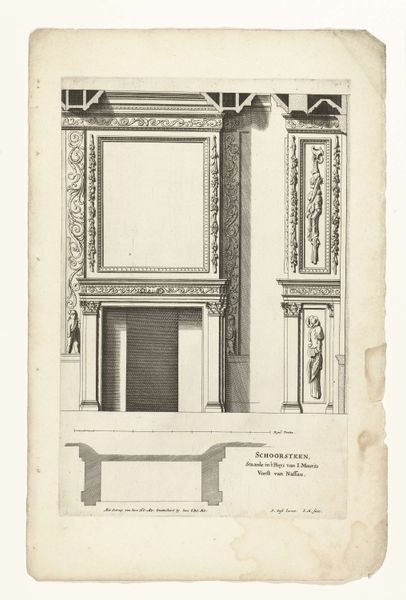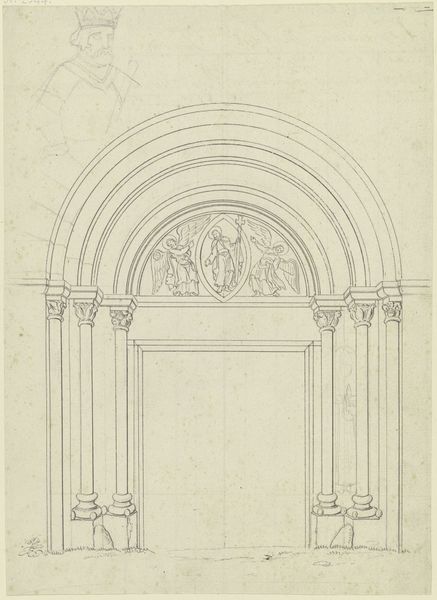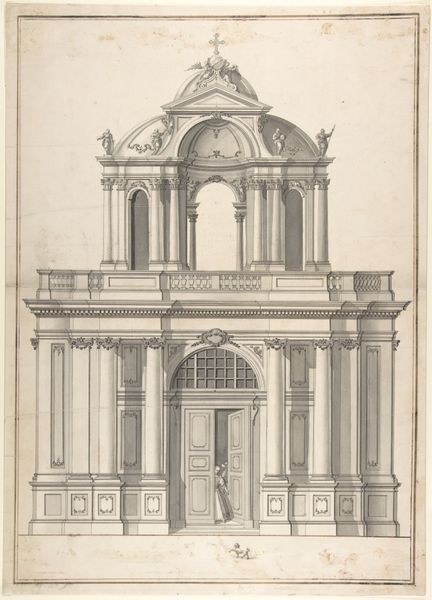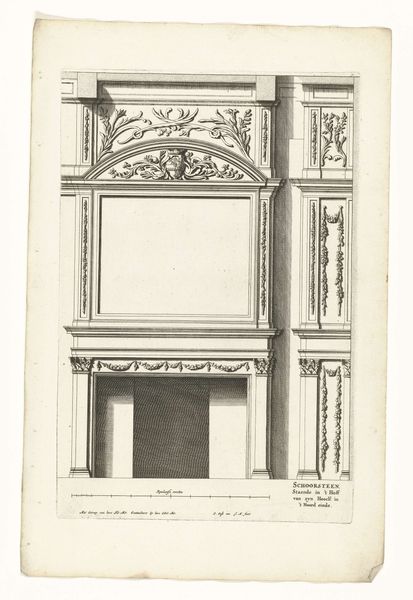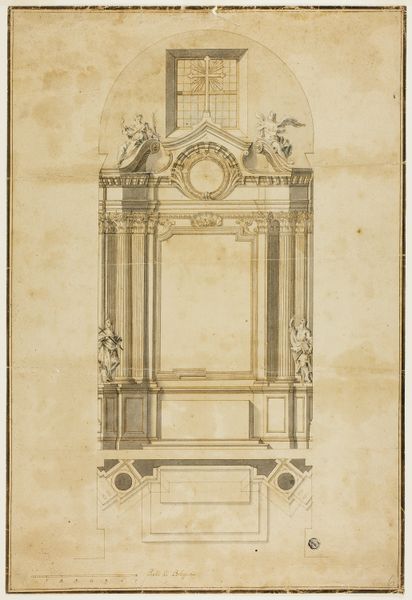
Design for the Façade of Santi Faustino e Giovita, Rome 1652 - 1725
0:00
0:00
drawing, print, paper, ink, architecture
#
drawing
#
baroque
# print
#
classical-realism
#
etching
#
perspective
#
paper
#
ink
#
geometric
#
architecture drawing
#
history-painting
#
architecture
Dimensions: 22-5/8 x 14-5/8 in. (57.4 x 37.2 cm)
Copyright: Public Domain
Curator: A somber mood seems to permeate this proposed façade. The fine lines suggest a deliberate precision, but the symmetry feels almost severe, don't you think? Editor: Indeed. The rendering before us is entitled "Design for the Façade of Santi Faustino e Giovita, Rome," attributed to Carlo Fontana, created sometime between 1652 and 1725. Executed in ink on paper, as an etching, this work is currently housed at the Metropolitan Museum of Art. Curator: The façade itself is remarkably self-contained. Note how the pilasters and columns, although adhering to classical proportions, are flattened. The building almost presents itself as a stage set rather than a functional structure, reducing any external function of religion and becoming, maybe, a piece for contemplation in and of itself. Editor: Precisely. Fontana, working in the shadow of Bernini and Borromini, would have felt intense pressure to adhere to evolving aesthetic preferences of the Roman Church. His choice to adhere to some classical features whilst including overt signs of decoration and a papal coat of arms illustrates his desire to stay loyal to those who hired him, while expanding upon Baroque classicism that Bernini used and invented. Curator: Looking closely at the balance, the geometric order…one could argue that this design anticipates aspects of neoclassical architecture. This architectural statement suggests a shifting emphasis towards reasoned design principles during a period defined by religious tension. Editor: One wonders about the intended audience, the socio-political pressures Fontana faced, and his legacy to future architectural designs that echoed through civic spaces across Europe in centuries to come. The politics surrounding this creation give context to how such a symmetrical architectural project came to be, in comparison to baroque stylings happening elsewhere at this time. Curator: Indeed. What a fascinating lens through which to consider this proposed façade. A rigid classicism that suggests how the forces of reason could bring harmony to urban chaos, reflecting perhaps on religious certainty. Editor: Or a piece that tried to offer comfort in rigid lines and geometric shapes for a place of peace when other powers are clashing in your everyday world. Regardless, its formal elegance is undeniable and how we use architecture today, came from these kinds of experiments during changing political and social times.
Comments
No comments
Be the first to comment and join the conversation on the ultimate creative platform.
